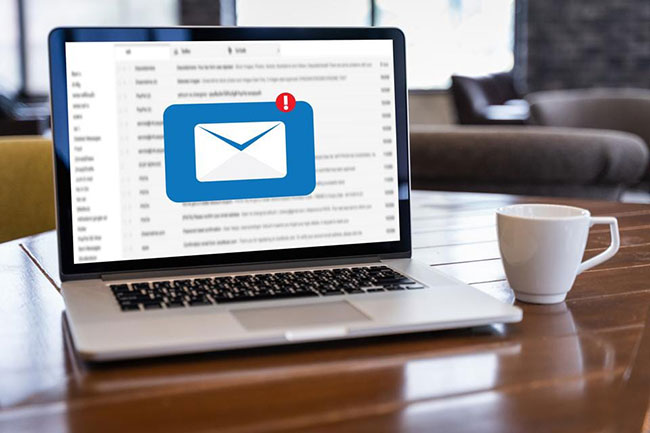3 Ways Email Verification Can Improve Marketing Campaigns

Email marketing continues to be a powerful marketing channel allowing businesses to reach more customers, drive leads and, as a result, improve sales and generate revenue. However efficient email marketing campaigns require clean and comprehensive distribution lists—ones that are not full of invalid and unreachable email addresses. How can you ensure your mailing list isn’t chock full of email addresses that’s bound to cause hard bounces and could eventually land you on someone’s blocklist? We’ll tell you three possible ways to do that.
But first, we’ll tackle the basics.
Email Marketing 101
When talking about email marketing, we’re bound to encounter terms that could be confusing for some. We listed three terms that all email marketers should have down pat.
Bounce Rate
Emails are said to bounce when the addresses they are sent to are invalid or don’t exist. The more messages bounce, the higher an organization’s bounce rate gets. And very high bounce rates not only reduce the effectiveness of marketing campaigns but may even prevent emails from reaching their intended recipients. That’s why organizations aim to keep their bounce rates to a minimum. Keep in mind, though, that companies’ bounce rates vary and generally range from less than 0.4% (great) to 1.5% or more (critical), according to Klaviyo.
Soft and Hard Bounces
There are two kinds of bounces—soft and hard. Soft bounces, which are caused by temporary mailbox unreachability (e.g., glitches on the part of email service providers [ESPs] and full inboxes), are not that big of a problem and don’t affect marketing efforts negatively. Hard bounces are another matter altogether. They are caused by email address invalidity due to improper formatting, lack of corresponding mail server and mailbox, and others, which we’ll discuss in the next section. In sum, hard bounces lead to high bounce rates.
Email Verification
Email verification is one of the most effective ways to keep bounce rates low. It is the process of ensuring that all of the email addresses in a marketing distribution list are valid, reachable, and can receive messages. While the process can be done manually, doing so is time-consuming and prone to human error. That’s why most businesses instead rely on automated means, primarily using an email verification tool.
After going through the basics, you now have an idea why experts say that email verification can improve marketing campaigns. If you’re still at a loss, here’s the rationale behind it: An email marketing campaign can’t be deemed effective if its implementer has a high bounce rate. And keeping bounce rates to a minimum requires email verification.
Improve Marketing with Email Verification
Let’s dive into greater detail by looking at three specific ways email verification can improve marketing efforts.
Way #1. Make Sure Recipients Are Reachable
No matter how well-crafted your sales pitch is, it won’t work if your marketing email—its vehicle—doesn’t reach your intended recipient. An email verification tool that has email-sending emulation capability and can check for a Simple Mail Transfer Protocol (SMTP) connection can help with that. It can make sure your target mailbox can receive messages. An email address that is reachable will give this result:
smtpCheck: String
"true"Way #2. Talk to the Right People
A lot of companies, especially equipment manufacturers and wholesalers, prefer to limit their sales communications to enterprises, as they don’t normally sell products/services to individuals. That’s actually the rationale behind requiring business email addresses in signup forms. While such a check can be accomplished manually, the process is far faster to do, especially when you’re dealing with at least hundreds of email addresses, with an email verification tool. It will allow you to check if the address is branded or was created using a free email service. A corporate email address will give this result when verified:
freeCheck: String
"false"Way #3. Clean Up Your Act
Distribution lists are indispensable to email marketers, but a list that is riddled with invalid email addresses just won’t do. An email verification tool can help companies get rid of uncontactable addresses so they can keep their bounce rates low, ensuring high deliverability that could translate to better marketing and sales results.
The tool can ensure that an email address has a corresponding mail server, evidenced by the presence of mail exchanger (MX) records. A reachable address gives off these results:
dnsCheck: String
"true"
mxRecords: Array
0:
"alt1.aspmx.l.google.com.",
1:
"aspmx2.googlemail.com.",
2:
"aspmx.l.google.com.",
3:
"aspmx3.googlemail.com.",
4:
"alt2.aspmx.l.google.com.", The email verification tool can also tell if an address is disposable or not. A reachable email address should give this result:
disposableCheck: String
"false"
Automated email verification can also help businesses catch incorrectly formatted email addresses that could cause hard bounces. Users should see this result for addresses that follow Internet Engineering Task Force (IETF) standards:
formatCheck: String
"true"
Finally, employees come and go all the time but their leaving shouldn’t be a reason for you to suffer from non-deliverability woes. You can continue sending messages to their email addresses so long as their organizations have a catch-all address, which ensures they get messages meant for their employees (even those who have left or misspelled their contact details). The tool indicates the presence of a catch-all email address through this result:
catchAllCheck: String
"true"
---
Email verification, as you’ve seen, is a great means to improve marketing campaigns because it helps ensure that your messages always reach vetted consumers who are truly interested in your offerings. At the end of the day, the process reduces hard bounces, boosting not just your marketing efforts but also your sales.
